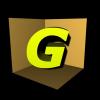Hi.
I am looking for a better way to create 2D / 3D icons for items from 3D models. For example, I have about 120 items in the game.
Now I am creating icons for items as follows:
1)I create a simple script inside the game that will sequentially make a screen shot from the camera and change the item. All this is done on a green background.
2)I put all these screenshots in Photoshop. And for each subject I delete the background, center it on the grid, crop it.
3)I put it into the game. And when building inventory slots with items, I still have to align and scale them because each item has the different size. And I must select all these parameters for each subject manually. It takes too much time.
Does anyone have any ideas how to do this faster? Maybe there is software to create something like that?
Thx.
Sorry for my English.








